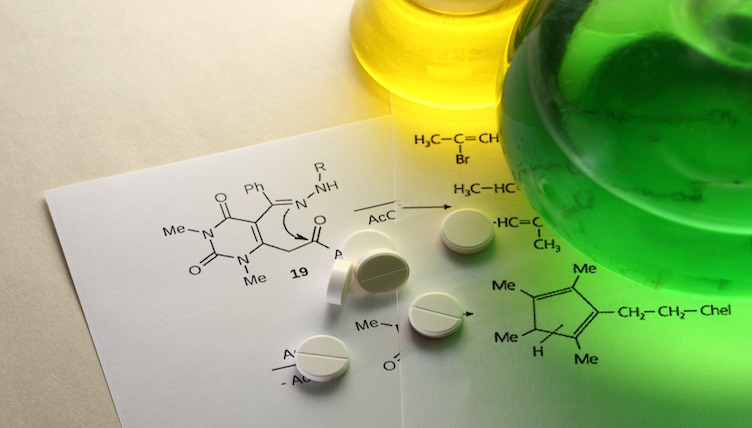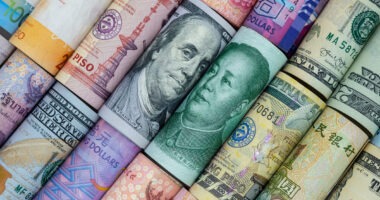Raw Materials Sourcing: The Trade Battle Between the US and China
The escalating trade tensions between the US and China took another turn as the American Chemistry Council, which represents US manufacturers of chemicals and plastics, testified last week to oppose what it called a “stunning and confusing” reversal in a US proposal to impose tariffs on an additional $11 billion of plastics and chemicals imports from China. What may be next?
Drawing the battle lines
Earlier this month (June 2019), the American Chemistry Council (ACC), which represents US manufacturers of chemicals and plastics, testified before a hearing of the Office of the US Trade Representative (USTR) to oppose a list of products that would be subject to a 25% tariff on imports from China or so-called Section 301 tariffs, referring to provisions of trade law that give the US authority to enforce trade agreements and address “unfair” barriers to exports. The ACC’s opposition stems from what it called a “stunning and confusing reversal” by the US, which culminated in a new list of Chinese imports designated for a 25% tariff, which included 114 of 141 chemicals and plastics products that had previously been removed from a list of products subject to these tariffs.
“To ACC and our members, it appeared that the Administration had determined that these 141 products were essential to US manufacturing and agriculture, and therefore should not be subject to tariffs,” said Ed Brzytwa, ACC Director of International Trade, in a June 19, 2019 statement. “The Administration’s reversal on these products is surprising, injecting more confusion and greater uncertainty in the US chemical sector.”
The US had first imposed a 10% tariff on $200 billion worth of Chinese goods, including chemicals, in September 2018 and for which China responded with its own tariffs. Those US tariffs applied to a total of 1,517 chemicals and plastics imports from China, valued at $15.4 billion, according to information from the ACC. Retaliatory tariffs by China affected more than 1,000 US chemicals and plastics exports, worth an estimated $10.8 billion, according to the ACC.
Chemicals and China-US trade
The June USTR hearing was designed to gain input across all industries on the Trump Administration’s move to place US 301 tariffs on Chinese imports on approximately $300 billion worth of goods. The previous 25% tariffs applied to products in three tranches or product lists with a total trade value of approximately $250 billion. That 25% tariff on Chinese imports was originally set to take effect in January 2019 but was postponed as China and the US continued to engage in negotiations with the sides holding meetings in March, April, and May 2019. When talks did not progress, US President Donald Trump directed the USTR to increase the rate of the additional duty to 25%, but as part of the USTR’s authority, it may exempt certain products from the tariffs. The June USTR hearing was designed to gain input from industries on the 25% rate increase and consideration for products to exclude from the tariffs. Although affecting mainly consumer products, the 25% tariff would include 214 chemicals and plastics product categories, amounting to another $11.0 billion in Chinese imports of chemicals and plastics subject to tariffs for a total of $26.4 billion of chemicals and plastics imported from China subject to the higher tariff.
“A 25 percent tax increase on $26.4 billion in chemicals and plastics products is unsustainable for a majority of chemical manufacturers, regardless of size or sector, due to their early position in the manufacturing supply chain,” said ACC’s Brzytwa in his testimony at the USTR hearing. “When the chemical industry’s costs increase, it causes a ripple effect across the US economy, impacting downstream customers that rely on chemicals to do business. Ultimately, US consumers will pay higher prices for goods and services.”
The tariff product lists exclude pharmaceuticals, certain pharmaceutical inputs, select medical goods, rare earth materials, and critical minerals and also includes product exemptions granted by the USTR. However, the inclusion of previously exempt chemicals and plastics products in now a new or fourth list of products subject to the proposed 25% tariff on imports from China is what the ACC is opposing. “We believe the Administration listened to our case for removing essential chemicals from the tariff lists,” said Brzytwa, in its testimony in the USTR hearing. “In September 2018, US chemicals manufacturers welcomed the Administration’s removal of $3 billion in chemicals and plastics imports from the final U.S. List 3. To ACC and our members, it appeared that the Administration had determined that these 141 products were essential to US manufacturing and agriculture, and therefore should not be subject to tariffs. However, in an unexpected reversal, the Administration’s proposed List 4 includes at least 114 chemicals and plastics products that had been taken off the proposed List 3. These products accounted for $2.68 billion in imports in 2017. The Administration’s reversal on these products is surprising, injecting more confusion and greater uncertainty in the US chemical sector,” he said.
The ACC has been an opponent of US tariffs on imports from China due to what it sees as an erosion of US chemical industry competitiveness by placing additional costs on its manufacturing value chain and negatively affecting US exports to China. “We are starting to see signs that the tariffs are disrupting supply chains, cutting off markets, and eroding US chemical manufacturing competitiveness,” said ACC President and CEO Cal Dooley, in a May 6, 2019 statement.
Although chemical imports from China grew by 22.7% in 2018, the retaliatory tariffs imposed by China in 2018 dampened US chemical exports to China, resulting in only a 2.7% increase in 2018, which nearly tripled the US chemicals trade deficit, from $1.4 billion to $4.0 billion, according to information from the ACC. China’s retaliation to the US tariffs in 2018 affected nearly $11 billion in US chemical and plastics exports to China, according to the ACC. Total US chemical exports were $140 billion in 2018, accounting for 10% of all US goods exports and 9% of all global chemicals exports, according to the ACC. Approximately 40% of all US chemical exports and more than half of all US chemical imports are between companies and their subsidiaries. China is the third largest market for US chemical exports, valued at $12 billion in 2018, third behind Mexico and Canada, which each had $23 billion in US chemical exports in 2018.
“ACC holds the position that a prolonged trade war between the United States and China—in which chemicals being subjected to higher tariffs becomes a fixture, not an exception—could reverse the fortune of the US chemical manufacturing sector,” said Brzytwa in his testimony before the USTR. “Our industry’s future growth depends on a strong US-China trading relationship, full access to China’s large and growing market, and a certain and predictable trade policy–not threats of more or higher tariffs. While we continue to support the Administration’s efforts to address unfair trade practices in China, including inadequate protections of intellectual property and forced technology transfer practices, chemicals must be taken off the front lines of this trade war. We urge the Administration to get back to the negotiating table, end the trade dispute, and lift the China Section 301 additional tariffs.”
The US and China are scheduled to resume trade talks later this month (June 28-29, 2019) when US President Donald Trump and China’s President Xi Jinping will meet at the Group of 20 Summit composed of world leaders from 19 countries and the European Union, in Osaka, Japan. At the discussion are possible new US tariffs on $300 billion in Chinese goods as both sides seek to avoid further trade tensions and advance negotiations.







